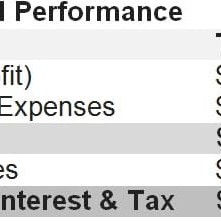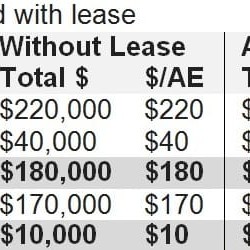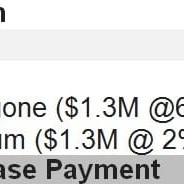I met with some producers in Southern Queensland recently who have built their business up over time and are looking towards their next move to grow their business.
They downsized a number of years ago by selling a block to end a partnership arrangement, so while they are relatively small (less than 1000 animal equivalents), they are debt-free and have money in the bank.
They had been losing bidder on a couple of blocks and said that even though land prices in their chosen area have dropped, they could not make the sums work at the prices the blocks went for – particularly when taking into account the interest they were getting on money in the bank, at next to no risk.
We then discussed leasing, and whether that may be a better way for them to achieve greater scale more quickly and to get an adequate return on their investment.
The question then becomes, “What can I afford to pay to lease the land to make it a worthwhile venture?”
Below is a simple process to answer that question. It is a fictional scenario, based loosely on the above business but with figures changed to make them unidentifiable and to simplify the calculations.
The fictional scenario is a business currently running a 1000 AE herd, it has no debt and $1.3 million invested in a term deposit. There is an opportunity to lease a 2000 AE block and then use their cash to stock it and for working capital.
To remove that money from the low risk investment and to put it at risk through the leasing arrangement the owners require the 6.0pc average long term return they have got on that money, plus a risk premium of 2.0pc. Here is their current financial performance:

Now we look at what the situation would be if the country were leased.
The lease country is more extensive than the current block so we predicted that income (gross profit) would fall slightly to $210/AE, and enterprise expenses would be unchanged on an AE basis, resulting in a gross margin of $170/AE, averaged across the 3000 AE herd.
We then look at the overhead expenses. Fortunately the business has good information on what its overhead cost structure currently is, so we go through each overhead cost line asking the question of what will change with the additional leased area and what will not.
We estimate that overheads will increase by $125,000, mainly in the areas of wages, fuel, R&M and depreciation. The 2000AE will be purchased at a cost of $600/AE ($1.2M) and $100,000 of plant & equipment will be required to be purchased, totalling $1.3M. The budgeted performance with the lease is below.

This shows that profit (Earnings Before Interest & Tax) with the leased area increases by $205,000 to $215,000. We need to deduct from this increased profit the interest they were receiving on the money in the bank and the risk premium, to work out the value of the lease.

This leaves $101,000, which is effectively the breakeven lease price at which they get the return they were getting in the bank, plus the risk premium. If they pay more than this then they do not get the return they were seeking, and if they pay less then they get more than the return they were seeking.
If they decide to offer to pay the $101,000 for the lease, what does it mean for the lessors? If we presume that the lessors value their land at $2000 per AE area then this equates to a 2.5pc annual return to the owner. This may seem low, however in assessing that, three important things should be considered:
- this is likely more than they were making out of the business previously with the long-term average operating return (return on assets excluding capital gains) across the industry at or below 1pc
- the lessors still stands to benefit from any future capital gains, which over time have exceeded operating return in the beef industry
- the lessors will free up capital through the sale of their herd which could be used for debt retirement and/or to fund their own retirement. They may also have the opportunity to continue living on their property with a secure income.
If the lease was structured on a 6pc yield, which is often quoted in the industry, what would this mean for the lessees?
The below table shows that the profit of the 3000AE business would not be enough to cover the lease payment, and after taking into account the forgone interest the lessees are more than $100,000 in the red, compared to $10,000 in the black before the lease – and this is without accounting for the risk premium.

The increased herd size under the lease scenario resulted in a significant increase in profit (at EBIT level), caused by increased scale and that the increased scale decreased overheads on a per AE basis. However what the lessees pay for the lease, determines whether the net return to them is positive, and provides adequate return for capital invested.
This is a simplified scenario with simplified calculations. The breakeven lease price will be different for each producer and this fictional scenario should not be relied upon for any decisions. Actual calculations with client involve doing analysis over multiple years to model herd performance and include sensitivities based on seasonal and price variations. The client would also be encouraged to seek advice from their accountant on the taxation implications. However the basic process would be as above, that is working out what the additional benefit will be, what the required return is, and then what the difference is, which is what you can afford to pay for the lease.
- The calculations and approach used above are based on principles covered in the Business EDGE workshop. The Business EDGE workshop was developed by Meat & Livestock Australia to improve the business and financial management skills of beef producers. Bush AgriBusiness Pty Ltd is holding these workshops in Dalby, St George, Taroom and Springsure during October, these will be delivered by Ian McLean, Phil Holmes and David Counsell, for more information click here.



HAVE YOUR SAY